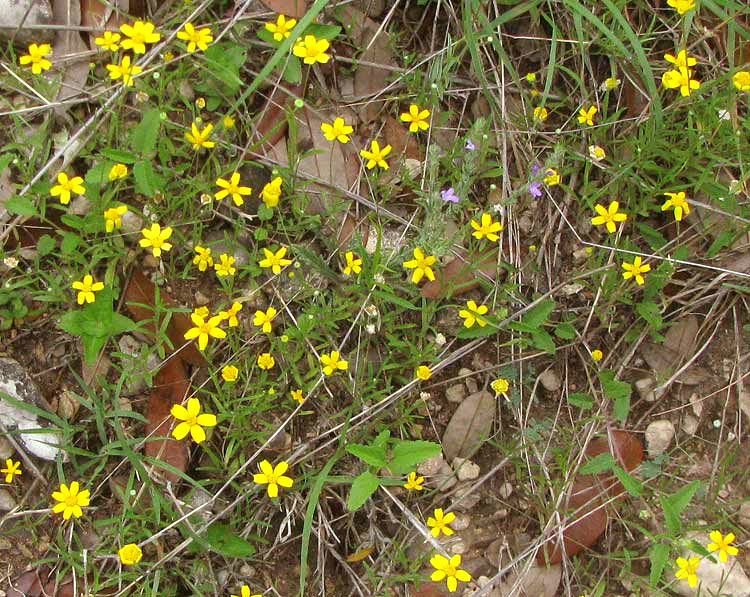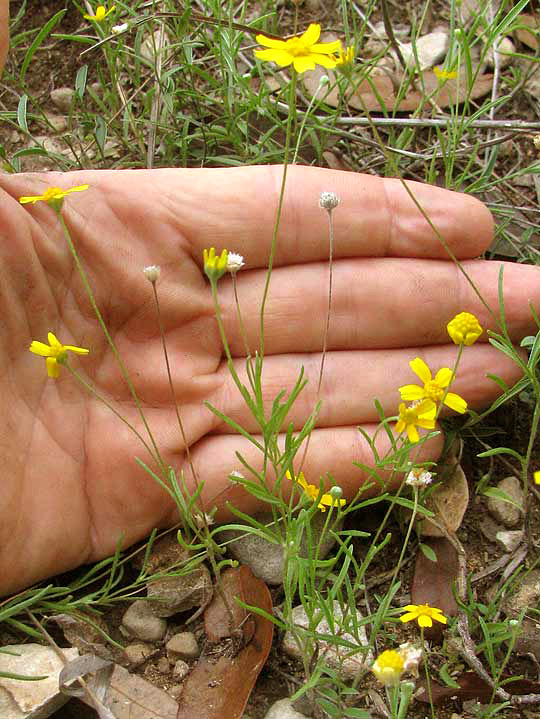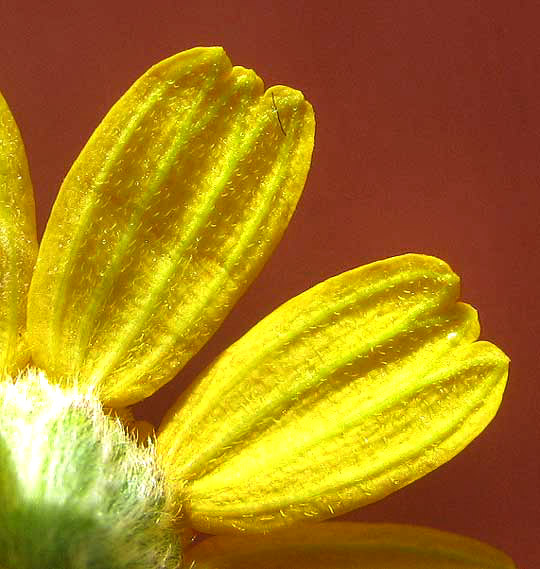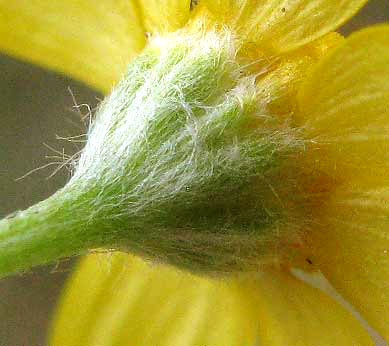Excerpts from Jim Conrad's
Naturalist Newsletter

from the June 16, 2013 Newsletter issued from the valley of the Dry Frio River in northern Uvalde County, southwestern Texas, on the southern border of the Edwards Plateau; elevation ~1750m (~5750 ft); N29.62°, W99.86°; USA
FINELEAF FOURNERVED DAISY
Among the spring wildflowers of eastern North America many different plant families are represented, such as the Lily, Iris, Rose, Buttercup, Mustard and Geranium Families, and many others. The fall flora, however, is heavy on members of the Composite or Daisy Family
-- in which are found asters, goldenrods, sunflowers, coneflowers, eupatoriums, etc. Here in southwestern Texas the spring wildflower species have mostly been members of the Composite or Daisy Family. A more diverse selection of plant families occurs in disturbed sites in the valley, along roads and in weedy areas around houses, but on the thin soils of our limestone hills the Composite or Daisy Family reigns supreme in spring, summer and fall.
In fact, it's hard to keep all the little golden-flowered and white-flowered composites straight, especially because many of them belong to genera I've never heard of.
For example, in our recent Newsletter of April 21 we looked at the Four-nerve Daisy, Tetraneuris scaposa, abundantly occurring on thin soil of our hills' lower slopes. You can meet that little yellow-flowered daisy, and see that the four nerves are on its petal-like ray flowers, at http://www.backyardnature.net/n/h/4nerve-d.htm.
Nowadays Four-nerve Daisies are still flowering, but during the last couple of weeks a very similar but noticeably smaller version of what appears to be Four-nerve Daisies has suddenly appeared along roads, on hillsides and at woods edges. At first I thought they were just drought-stunted Four-nerve Daisies, but finally so many consistently small plants turned up that I had to check them out. At the top of this page you can see a small part of a house-size population along a road. A close-up of a single plant showing that -- unlike the Four-nerve Daisy -- its stem branches well above its base, appears below:

Therefore, this didn't seem to be a runty Four-nerve Daisy after all. However, the special field mark for Four-nerve Daisies consists of the four conspicuous nerves on the rays, so I wanted to confirm that our smaller plant didn't have those four nerves. Well, it did, exactly like the Four-nerve Daisy, as shown below:

These conflicting signals indicated that I needed to "do the botany," so I checked out the involucre beneath the flowering head, finding it consisting of two or three rows of very hairy scales, or phyllaries, of similar lengths, just like the Four-nerve Daisy's, as shown below:

Breaking open the head, no scale-like paleae were found separating the disk flowers forming the head's "eye," and the crownlike "pappus" atop each future cypsela-type fruit consisted of several low scales with needlelike tips -- all exactly as with the Four-nerve Daisy.
So, the story is that here is a second species of four-nerve daisy, one usually listed by wildflower-book authors as the Fineleaf Fournerved Daisy. It's TETRANEURIS LINEARIFOLIA, occurring throughout most of Texas, southern Oklahoma and southeastern New Mexico, and arid northeastern Mexico. The earlier, larger species was Tetraneuris scaposa.
The genus Tetraneuris is one I never heard of before coming here, but now here we have two species of fournerved daisies abundantly flowering in both the valley and on hillsides. Our present Fineleaf Fournerved Daisy is an annual with stems branching well above the base, while the stem of the earlier, larger Four-nerve Daisy branched only near the base, and it was a perennial.
But, unless you're paying particular attention, you'd probably never notice the difference between them.